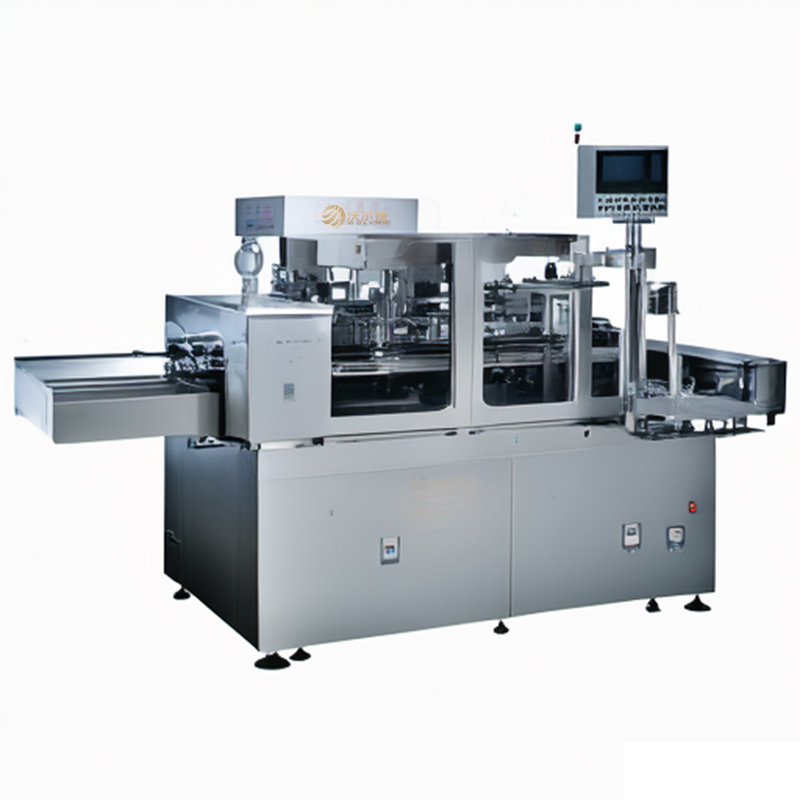Wolkon specializes in the production of semi-automatic cartoning machines, fully automatic cartoning machines, high-speed cartoning machines, and vertical cartoning machines. We customize multi-functional cartoning machines and cartoning production lines according to needs, and provide complete cartoning solutions, replacing them with machines. Boxing by hand. Machines require care and maintenance in order to improve the quality of machine operation and extend the service life of the machine. The following are specific maintenance methods:

1. Equipment maintenance
Care for equipment through general methods such as wiping, cleaning, lubrication, and adjustment to maintain and protect the performance and technical condition of the equipment is called equipment maintenance. There are four main requirements for equipment maintenance:
(1) Clean The inside and outside of the equipment should be neat and tidy. There should be no oil on the sliding surfaces, screws, racks, gear boxes, oil holes, etc., there should be no oil or air leakage in all parts, and there should be no chips, debris, or dirt around the equipment. To clean up;
(2) Neatness Tools, accessories, and workpieces (products) must be placed neatly, and pipes and lines must be organized;
(3) Good lubrication Add oil or change oil on time, keep oiling, and there will be no dry friction.
(4) Safety Comply with safe operating procedures, do not use equipment overloaded, the safety protection devices of the equipment are complete and reliable, and eliminate unsafe factors in a timely manner.
(1) Daily maintenance of equipment
Daily maintenance of equipment generally includes daily maintenance, weekly maintenance, and monthly maintenance.
1. Daily maintenance
Daily maintenance is carried out by equipment operators on duty, and attention should be paid carefully before, during and after the shift.
(1) Before work, wipe the equipment and lubricate it according to regulations. Check whether the handle position and manual operation part are correct and flexible, check the wear of the suction cup, if the wear is serious and need to be replaced, and whether the safety device is reliable. Run at low speed to check whether the transmission is normal and whether lubrication and cooling are smooth.
(2) During the class, pay attention to the operating sound, whether the equipment’s temperature, pressure, electrical and pneumatic systems, instrument signals, and safety insurance are normal.
(3) After work, turn off the switch. Remove dirt, clean the oil on the guide rail surface and sliding surface of the equipment, and add oil. Clean the work area and organize accessories and tools.
2. Weekly maintenance
Weekly maintenance is performed by equipment operators at the end of each week.
(1) Appearance Wipe the equipment guide rails, transmission parts and exposed parts, and clean the work site.
(2) Control transmission Check the technical condition of each part, tighten loose parts, and adjust the fit gap. Check interlocks and safety devices. The transmission sound is normal, safe and reliable.
(3) Electrical system Wipe the motor, check insulation and grounding to ensure completeness, cleanliness and reliability.
3. Monthly maintenance
Monthly maintenance is performed by equipment maintenance workers every month;
(1) Check the tightness of the chain, belt and carton conveyor belt. Press the belt firmly with your fingers and there will be no significant deviation of the chain.
(2) Check the box opener for wear and replace the air filter.
(3) Check whether the motor belt has been replaced.
(4) Add MP lubricating oil to the bearings every six months. Clean out the old oil before filling, and replace the bearings according to their condition.
(2) First-level maintenance
The first-level maintenance is mainly carried out by operators, assisted by maintenance workers, to partially disassemble and inspect the equipment as planned, clean the specified parts, clear the oil lines and pipelines, adjust the matching clearance of each part of the equipment, and tighten all parts of the equipment. . The first-level maintenance takes 4-8 hours. The main purpose is to reduce equipment wear, eliminate hidden dangers, extend the service life of the equipment, and provide equipment protection for the completion of production tasks during the next first-level maintenance period.
(3) Secondary maintenance
Second-level maintenance is mainly completed by maintenance workers, with the participation of operating workers. Second-level maintenance is included in the equipment maintenance plan, which involves partial disassembly, inspection and repair of the equipment, replacement or repair of worn parts, cleaning, oil change, inspection and repair of electrical parts, so that the technical condition of the equipment fully meets the requirements of the specified equipment integrity standards.
Prev:It is imperative for automated packaging machinery to guide the packaging industry
Next:What issues should be paid attention to when using the cartoning machine?